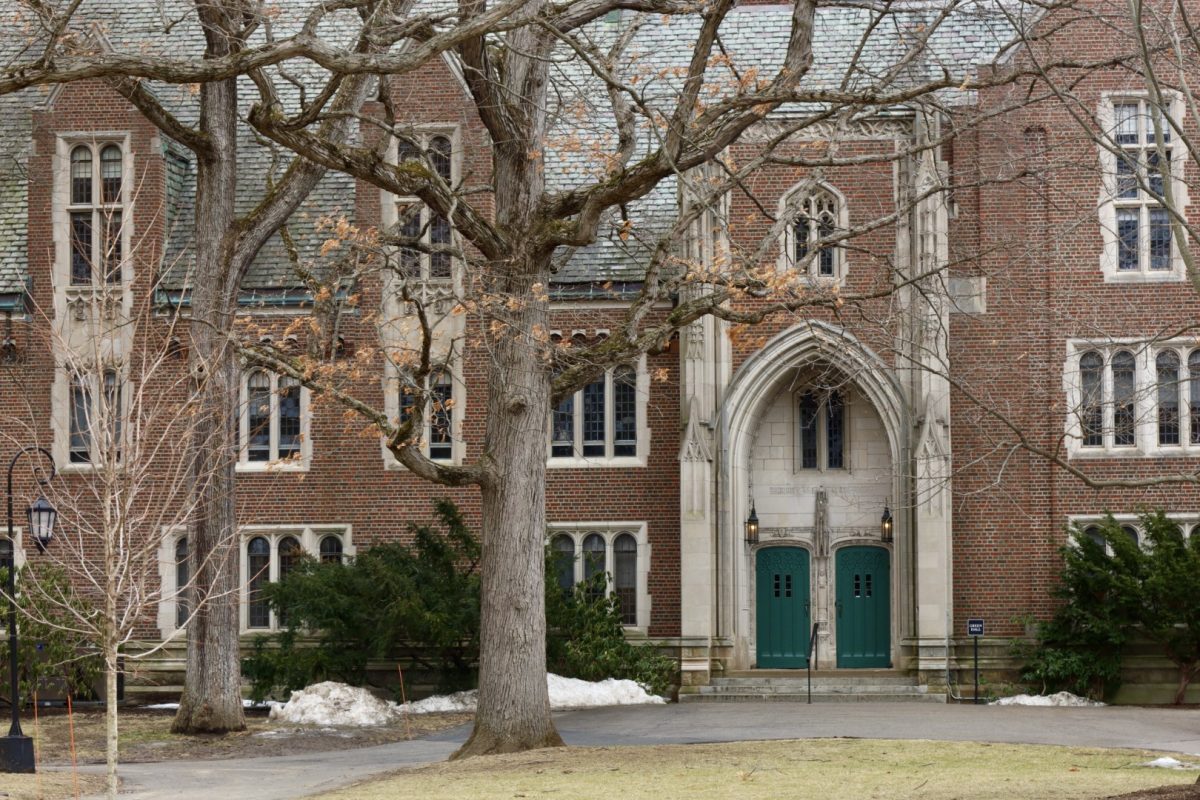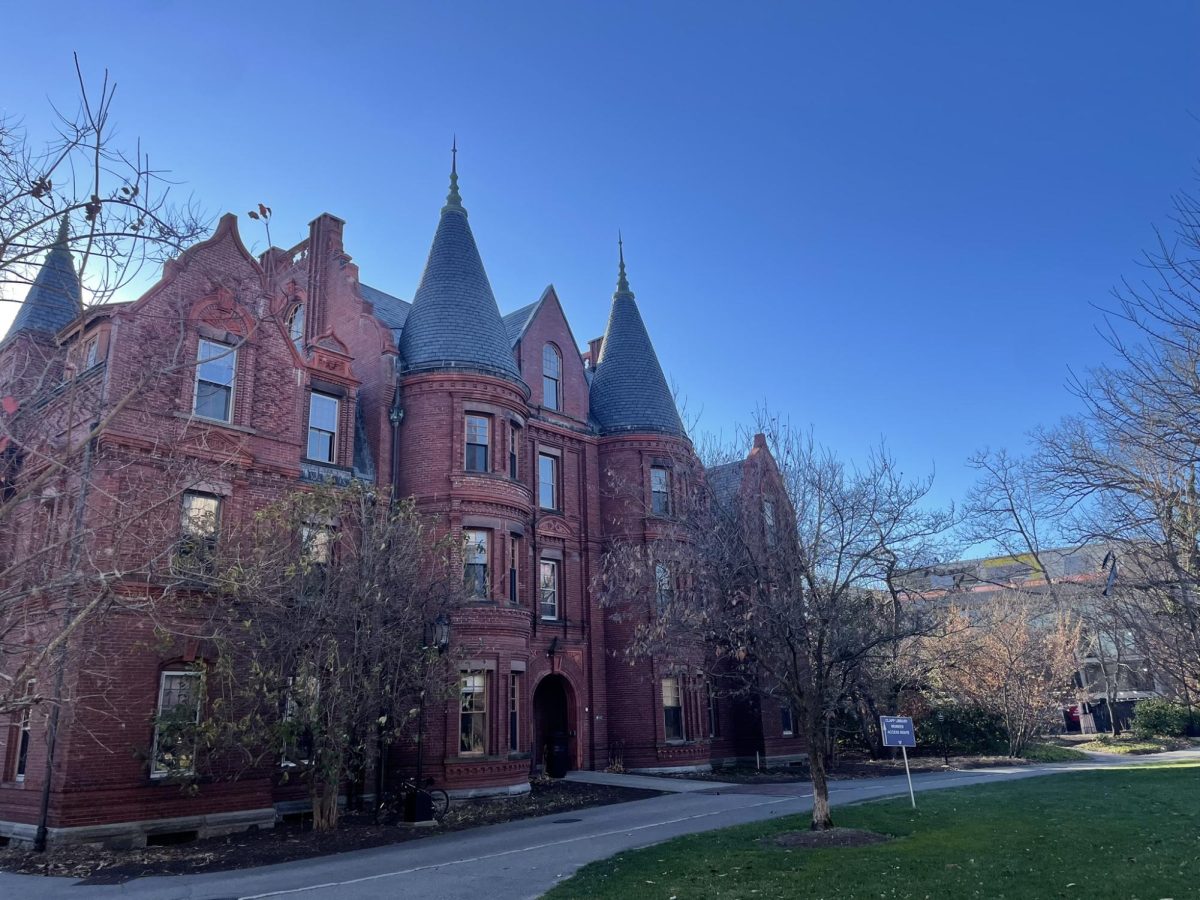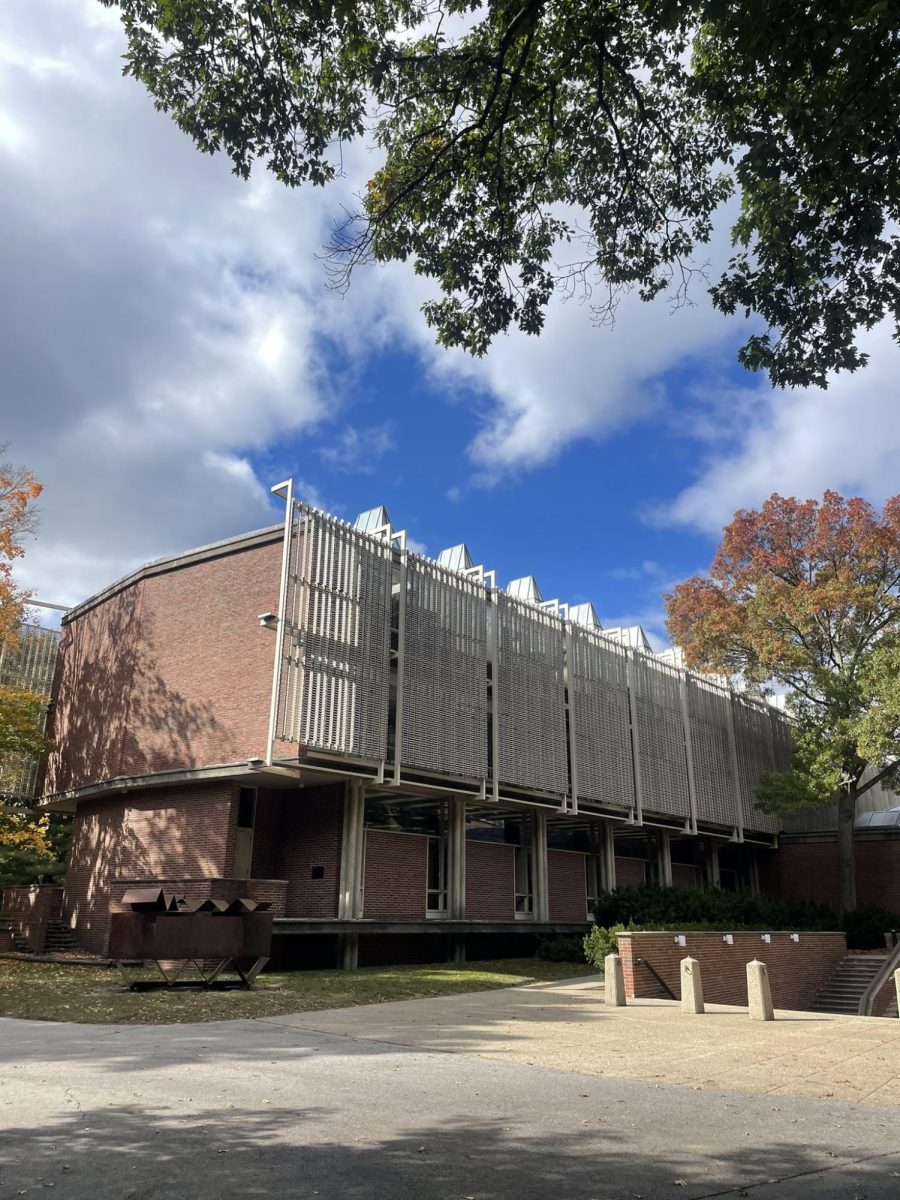By XUEYING CHEN ’16
News Editor
President H. Kim Bottomly, Provost and Dean of the College Andy Shennan and Dean of Students Debra DeMeis spoke with the Wellesley News yesterday about the College’s initiatives in response to concerns about Tony Matelli’s “Sleepwalker” sculpture.
After the installation of the “Sleepwalker” in Munger Meadow, student responses to the artwork attracted international media coverage. A petition established on Change.org calling to move the sculpture indoors currently has 949 signatures. While the media attention has dwindled, the College has not yet fully resolved all of the student concerns.
The president created a working group that convened last week to assess how the College should move forward in regards to the statue.
“I have also considered the student response in general. I’m excited about the student response. I have to tell you, I think it’s great that students have responded to their fellow students in support of them, especially ones that feel particularly vulnerable in respect to the statue,” Bottomly said.
Currently, the College does not have plans to relocate the statue.
In addressing student concern, administrators emphasized that they are committed to balancing the educational purposes of the College and the wellbeing of students. To maintain that balance, Bottomly stated that Wellesley must respect the integrity of academic ideas, whether scientific or artistic.
“Something presidents have to think about that no one else has to think about, besides the Board of Trustees, is the reputation of the College,” Bottomly said. “If we take the statue down, it will be very damaging for the reputation of the school.”
Beyond the ongoing community debate regarding whether to move the statue, Shennan noted that the statue revealed a larger issue, which is the belief among students that the administration does not listen to them.
“I hope that there are other ways, too, that we can show students that we are listening to you so that a little bit of the heat around this issue can be diffused. Because there is only one option or the other option, and I think we have to get ourselves out of the box to see the larger issues,” Shennan said.
Last semester, Wellesley held open Town Hall meetings to allow the community to exchange information and ideas with the administration as part of an effort to increase communication. Shennan believes that the lack of a discussion forum exclusively for the campus contributed to the escalation of the debate into a globally trending story. Once removed from the College community, the controversy allowed people who have little interest in or who are opposed to the values of the College and of women’s education to contribute negative opinions.
“We have a genuine, sincere desire to know what students are thinking. And if there are better places to put ourselves to listen to students, we should be doing that,” Shennan said.
Students, administrators and faculty communicate using many channels. Using the results of a social media survey conducted last year, the College is in the process of establishing a formal social media platform to streamline communication.
“The student upset comes because we haven’t sent out information. If there is information that we don’t share with you, it leads students to end up feeling left out of the loop,” DeMeis said. “So I do think we need to think about some ways of getting info out in a proactive way, not waiting until students ask for it, but really being clear that this that we are thinking about and we want you to know about that.”
Members of the administration also highlighted that the question of whether or not to move the statue has changed over time depending on the issues students want to address, which include safety, artistry or communication.
Bottomly stated that she was proud that Wellesley students facilitated so much intellectual dialogue about these issues, and defended the College against uninformed external opinions.
During this time, the Division of Student Life is looking into explicit responses to student needs in addition to ensuring the provision of general resources.
“What’s important about this is that we’re making no assumptions about why the “Sleepwalker” is disquieting,” DeMeis said. “Each of us brings our own personal histories to this campus. The ‘Sleepwalker’ might be disquieting for any number of reasons for people, from experiences they’ve had, to religious beliefs to beliefs just about what safety means.”
The Stone Counseling Center has offered a safe space for students to discuss experiences with the “Sleepwalker,” while numerous departments on campus have opened up dialogue about how the sculpture has affected students.
The Division of Student Life may also increase transportation services to ensure that students can move around campus safely, especially at night.
DeMeis added assurances that all mental health student organizations, including Sexual Assault Awareness for Everyone and Active Minds, have sufficient support to aid students.
The “Sleepwalker” installation coincides with Spring Open Campus, as well as the period during which the Class of 2018 will decide to enroll at Wellesley.
Bottomly believes that the issues brought on by the “Sleepwalker” will not negatively affect prospective students’ decision to attend Wellesley. She relayed assurances from Dean of Admissions and Financial Aid Jennifer Desjarlais, who believes that the recent student activism may even encourage enrollment.
“What I worry more about is the way the students or College are portrayed in the media,” Shennan said. “I don’t think that that’s been damaging, but it does bother me, and I think it would galvanize all of us to reflect on how important it is for us to maintain an excellent reputation of the College.”





